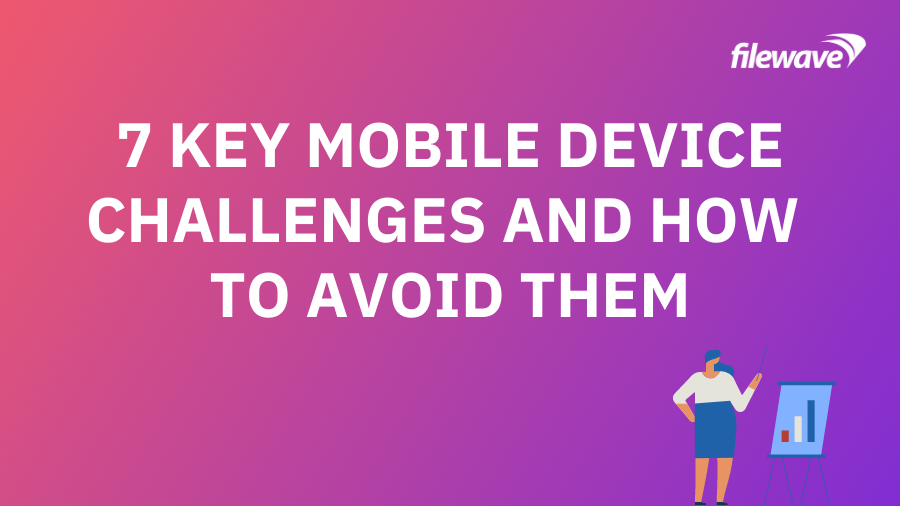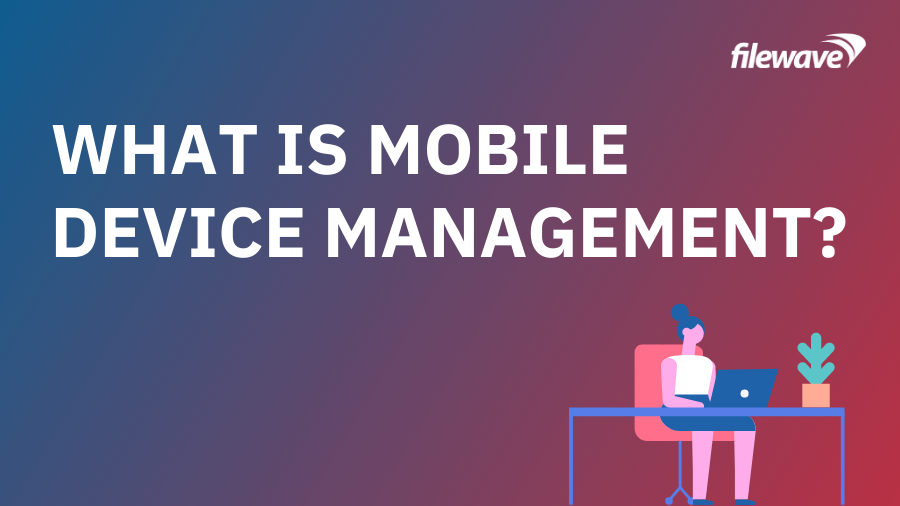Mobile devices can’t be managed like any other IT asset. Help your company avoid seven key mobile device challenges you’re likely to face.
Whether you manage desktop computers, servers, or internal networks, IT has something in common: hardware that’s fairly simple to secure. It doesn’t take much to restrict access and monitor the safety of these legacy IT assets.
Mobile devices, however, are a totally different beast. This technology is far more difficult to manage because it comes with a variety of unique features that you’ve probably never needed to consider – much less secure – before. So, how can you overcome mobility’s most commonly encountered device management challenges?
While nobody can guarantee 100% effective security, let’s talk about seven key issues you’re likely to come across – as well as how you can take them on to keep your mobile devices safe.
Convenience Can Be Dangerous
When it comes to enterprise tech, an efficient and seamless experience isn’t impressive – it’s expected. Your customers crave faster, more convenient ways to shop. Your employees want to work from anywhere without experiencing downtime. Unfortunately for you, these next-gen workflows are in many cases the thing that makes a mobile device dangerous.
Potential attackers can take advantage of this trend by tricking inpatient users who refuse to waste their time on prompts, notifications, secure login processes, etc. Even if they’re necessary for your security apps to function. A hassle-free experience without delays and interruptions is great, but device safety shouldn’t be sacrificed to make it happen.
In addition to blocking as many malicious apps and activities as possible, it’s a good idea to consider security training for anyone using one of your devices. That way, you can educate employees on the dangers and risks of being complacent – and hopefully eliminate problems before they even have a chance to happen.
Watch Out for Wi-Fi
Public Wi-Fi is another commonly encountered mobile device threat. Masked as harmless networks to get work done outside the office, all it takes is one bad actor putting a sign-in process that requires a user’s social media or email account to obtain access. And – once credentials are captured – a serious data breach can result for any user that repeats their password across other enterprise systems.
You need to make sure that any employee using a company-owned mobile device knows this. Your users should never use a public Wi-Fi network that demands personal credentials to connect.
You Can’t Always Trust Texts
SMS and text messaging is one of the most commonly used mobile device functions. However, most lack an adequate filtering solution or capability to protect your data. A hacker can easily make an app or a fake account that lets them phish thousands of people at a time.
Phone number spoofing can also take potential risks another step further. If an attacker can fake the short text message number that a business sends its notifications out from, there’s a high likelihood that someone’s going to take the bait. To avoid this scenario, coach your mobile device users to make a habit of contacting the relevant person anytime they’re suspicious of a request. That way, they don’t immediately reply and leak your credentials or confidential data.
Cloud Concerns
Today, bad actors are taking advantage of mobile devices by gaining access to iCloud and Google accounts. For many attackers, this method is far easier than trying to find vulnerabilities and build exploits for every device. Plus, this control gives them everything they could ever want: sensitive information, user activity, app data, contacts, and more.
By gaining this backdoor access, the person stealing these accounts can permanently track your mobile device and remotely make purchases or install malicious apps – doing even more damage in the process. So, you should require everyone to use a complex password for these accounts, leverage security questions with answers that can’t be easily found, and make users change their passwords regularly to avoid cloud-based issues.
Gone Phishing
We’ve talked about several technologies to this point. But the truth is that a mobile device’s biggest danger isn’t digital – it’s the people interacting with it. Phishing attacks are extremely popular in the mobile world because their smaller screens don’t display fake URLs in a browser as your computer does. There’s no cursor to hover over a link and find out what the actual domain is before you click.
To overcome these threats, your mobile device usage policy should caution employees on the risk of opening a suspicious link, email, or message. Or, you could put a security product like Unified Endpoint Management (UEM) in place to prevent them from being able to do so.
Configuration Considerations
In most cases, a mobile device runs with administrator rights and lacks any sort of anti-malware protection. And that creates a lot of potential for unencrypted data, which puts your business at serious risk for information leakage. Even if you require complex passwords and biometric access privileges.
You and your IT team need to be able to enforce and centralize security controls across every device. By using containers to separate trusted business apps and capabilities from personal ones, you give your organization the chance to sandbox threats and prevent them from happening.
Risky by Nature
Mobile devices are dangerous for several reasons. But portability is one that can’t be fixed by advanced technologies or IT support. Your smartphones are relatively small and unable to be physically secured, unlike legacy devices such as a server or HVAC system that can’t be easily lost or stolen.
To mitigate mobile technology’s risky nature, your mobile device policy needs to include a detailed process of who to contact, what steps a user should take, and how quickly to notify your company anytime a device is lost or stolen. That way, you can hold a user accountable if the incident was a result of their bad behavior. Using tools like Apple’s Find my iPhone or Google’s Find my Phone can also be useful in helping you keep track of where your mobile hardware is at all times.
Mobile devices are growing increasingly important. But – considering the rising number of threats, breaches, and regulatory compliance requirements – they’re becoming increasingly risky, too. You can take numerous steps to reduce these risks, but there’s one that’s more effective than the rest: scheduling a FileWave platform demo to see how we can help you protect your mobile devices.



